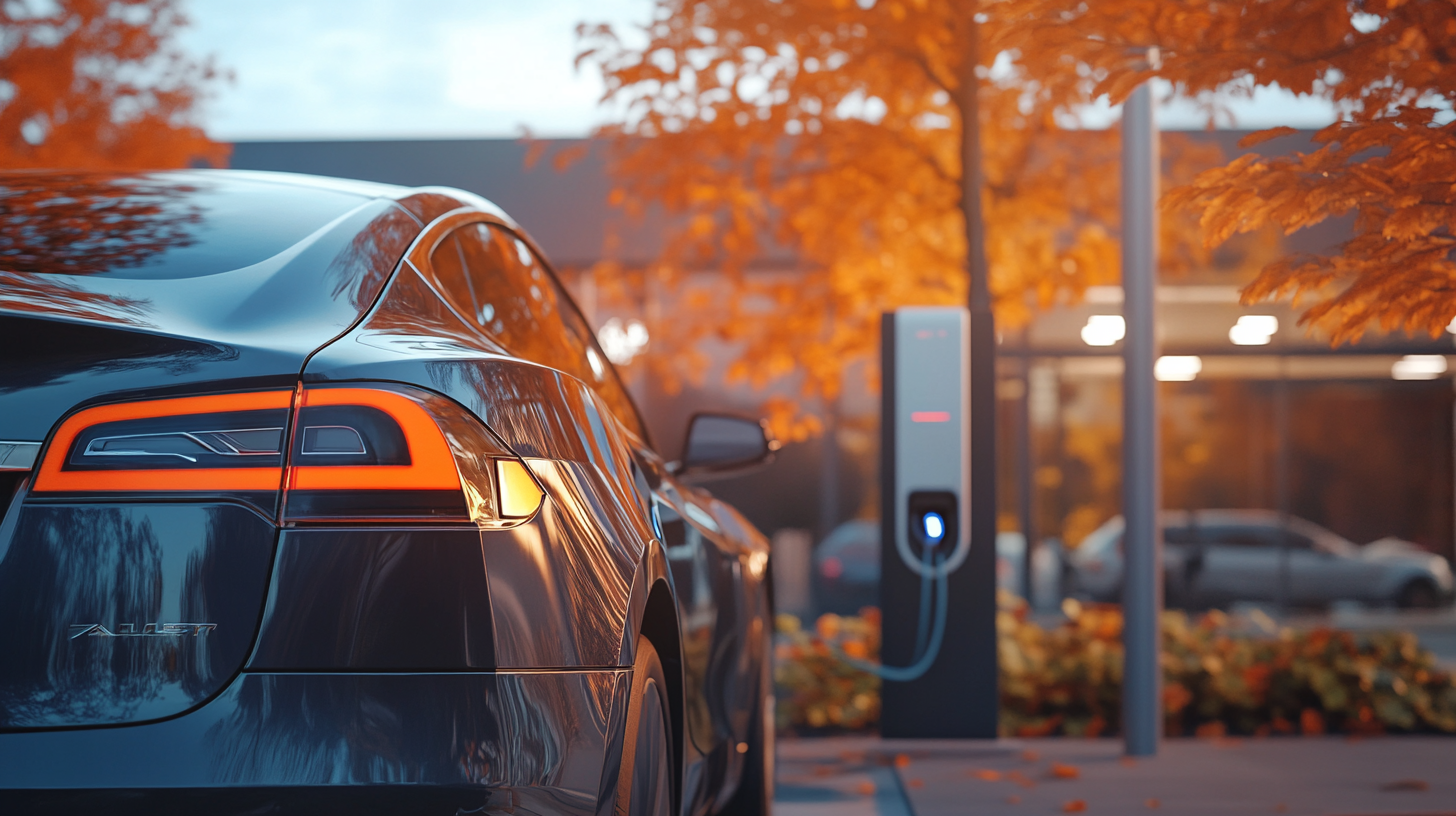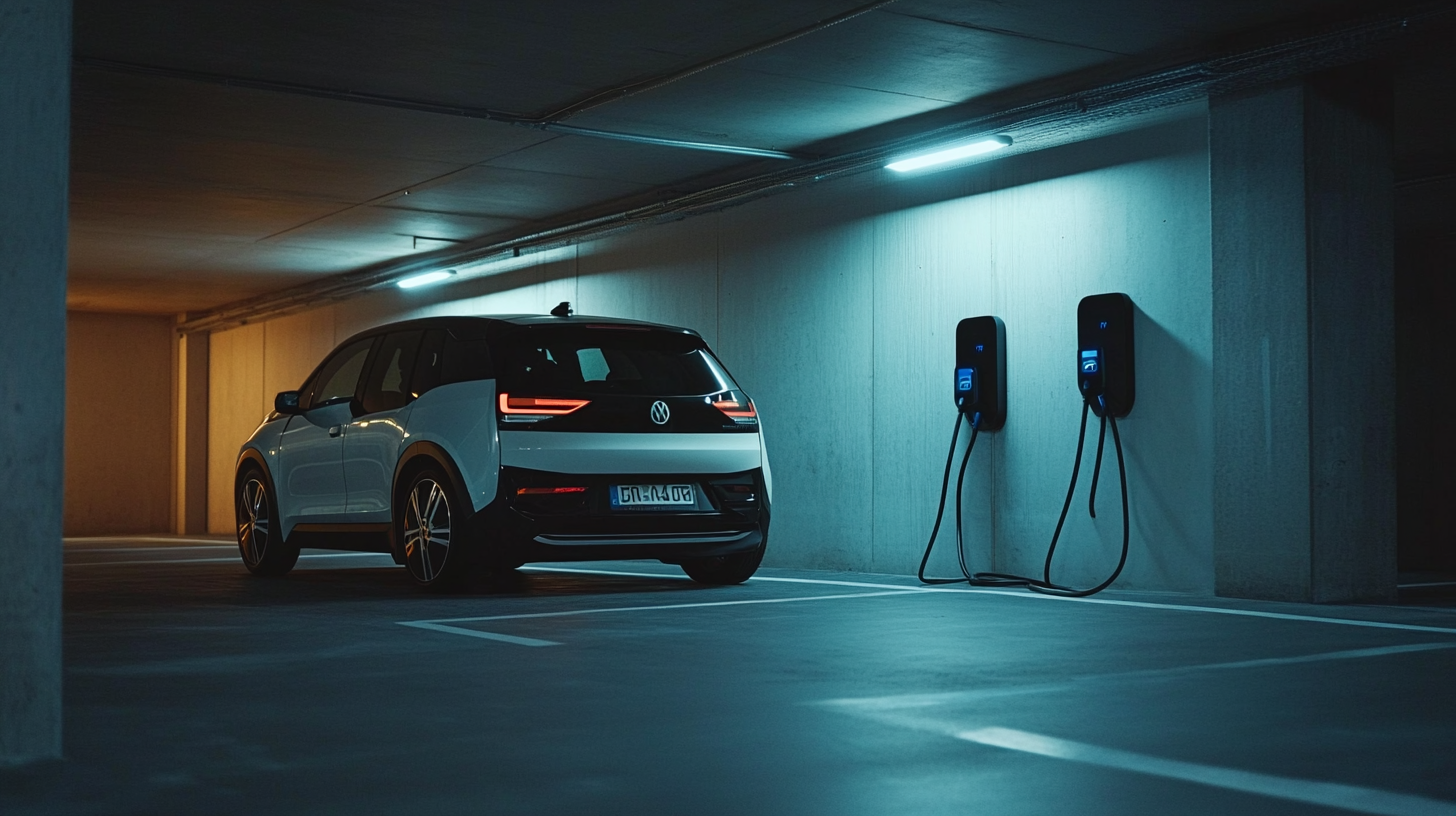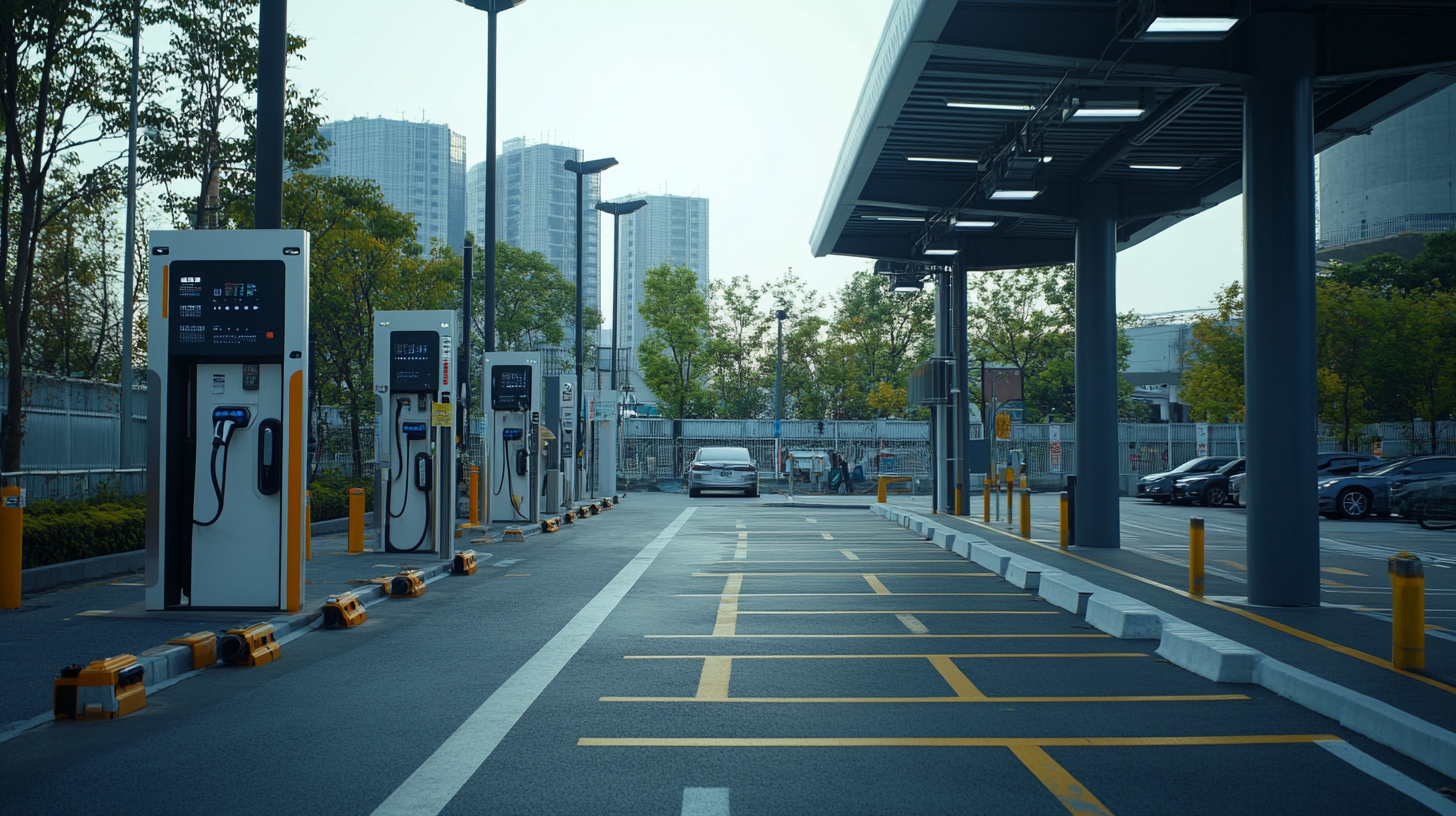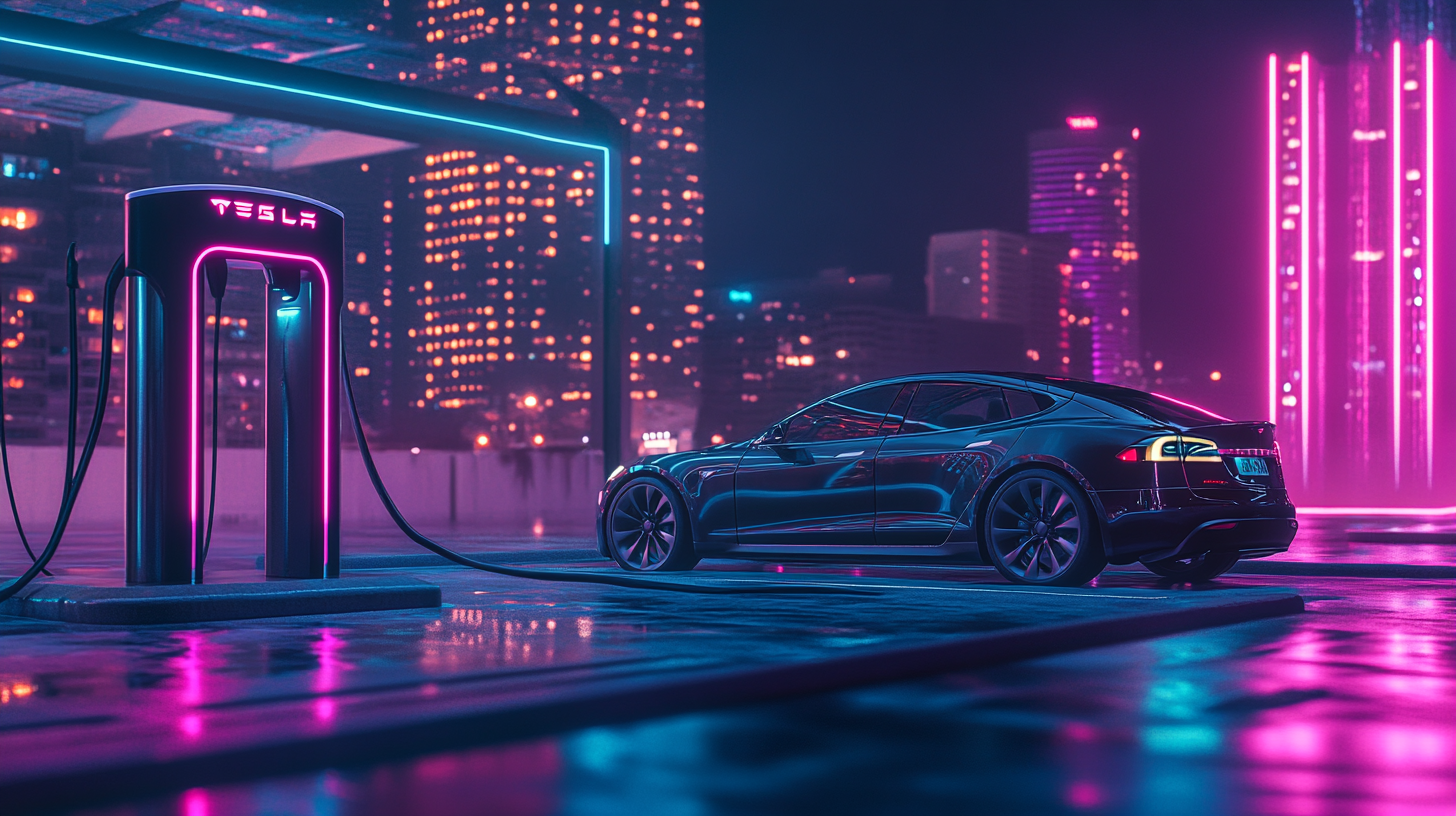The highly dynamic international market for electric vehicles (EV) has eventually transpired into many efficient and effective charging solutions for potential consumers. In its report of last year, the International Energy Agency (IEA) indicated that the number of electric cars on roads reached 10 million in 2020, and there will be no end to this significant increase as revealed by estimates of having over 145 million EVs by 2030. It is clearly seen then that the market has an interest in understanding the different types of EV chargers in order for consumers to get their money's worth with respect to electric mobility.
Different types of EV chargers- from Level 1 home chargers to Level 3 DC fast chargers- serve specific consumer needs and offer certain advantages. For example, a report confirms that DC fast charging delivers up to an 80% charge in 30 minutes, making it vital for long-distance travel and commercial fleet operations. This post seeks to discuss the specific differences, merits, and subsequent applications of the different EV chargers available and will assist buyers in wading through the muddled waters of deciding which infrastructure supports their electric vehicle requirements efficiently.

This adoption of electric vehicles is becoming more widespread across the world. Well, there are different EV chargers of various types where every stakeholder, be it the consumer or a business, need to know about these EV chargers for themselves. The three major charger types would be Level 1, 2, and DC fast charging, which offer great advantages to different requirements and surroundings. The growing market by the International Energy Agency (IEA) report indicates in 2021 that there are more than 1.5 million accessible public charging points around the globe, bringing about critical infrastructures required to support this industry. Level 1 chargers are basic types of devices which you could plug into a standard 120-volt outlet in a home for charging. Typical charging is for about 4 up to 5 miles per hour; thus, this is significant enough to require an overnight duration of parking without needing to work with this mode of charging: helpful again for residential areas since about 80% of all EV owners at home charge. A Level 2 charger offers speedier charging for up to about 25 miles of range gained in about an hour; that is, a 240-V Level 2 charger-perfect for the public, commercial charging, mainly at shopping venues and work. DC Fast Charging is what many would call a revolution in long-distance travel. This brings up an almost 80% charge in about 30 minutes of charging-an absolute must for highways. However, as per the market analysis done by BloombergNEF, it has predicted that deployment will skyrocket for DC Fast Chargers from now on. The report mentions that by 2040, an estimated 9.5 million units will be required in installing DC Fast Charger infrastructures around the globe to meet the growing electric vehicle fleet. Such a demand further affirms the necessity of charging infrastructures needing diversification to encompass the different requirements and ensure a sustainable transition to electric mobility.

The charging of electric vehicles have become something that increasingly matters to homeowners. For one, there is the convenience involved; having a charger at home allows overnight charging of the vehicle's battery, which is especially useful for people who go to work daily. International Energy Agency Report states that over 80 percent of EV charging happens at home, thus highlighting its relevance to the daily user. This incorporation into daily life enhances the comfort, but moreover, every driver expects to leave home each day with a full battery, ready to swing out the door.
Residential EV chargers are a great economic advantage over time. These cars are so cheap to charge at home that the Department of Energy states they can be 60 percent less expensive than filling a tank with gasoline. Many electric utility companies also have time-of-use rates that incent homeowners to plug in EVs during off-peak hours when electricity is less expensive. Thus, these users get to reap more energy savings while encouraging a sustainable energy environment during peak renewables generation.
Yet another important aspect would be the expected increase in property valuation. A study conducted by Zillow found that homes with EV charging stations may command a premium on their market value, thereby appealing to an increasing number of environment-conscious buyers. Such a trend may imply that the EV charger installation does not only improve the homeowner's lifestyle but constitutes an intelligent investment in a growing green real estate market.

This report must now highlight the potential long-term benefits of accessible public charging stations as electric vehicles become a global wave. As much as the International Energy Agency (IEA) released an industry report indicating that the number of publicly available charging points rose to 2.5 million globally in 2022, representing 45% increase from last year's figures, added to the fact that growing interests have surfaced amongst urban planners and government bodies to integrate the transition towards sustainable urban mobility.
Accessibility in Miniature Cities is one that becomes quite important for the owners of vehicles because it brings a lot of relief from range anxiety that probably comes along with having a battery-powered vehicle. According to a study released by the International Council on Clean Transport, urban drivers adopt EVs within ten kilometer proximity of their homes when it reaches the well-distributed public charging infrastructure. It becomes easier to remember owning an electric vehicle when the integration into everyday life is so much simpler.
Convenience includes not only having many charging stations but also pretty much any kind of charging convenience. For example: Fast stations are able to charge vehicles to 80% within about 30 minutes, so they suit all those busy urbanites. As Bloomberg New Energy Finance indicates, 40% of all installed charging infrastructure will be composed of fast chargers by 2030, proving that they are vital in boosting the entire purchasing experience for EV consumers living in cities.

EVs herald the entry of innovative technologies, especially in the domain of EV chargers. Leading the pack of smart EV chargers are myriad features that foster the utmost efficiency in charging. The International Energy Agency states that, by the year 2020, the worldwide stock of electric vehicles climbed to ten million, and smart charging solutions offer crucial support to maintain growth through optimizing energy use and costs.
A unique innovation in smart EV chargers is communication with the grid and other devices. Utilizing sophisticated programming based on complex algorithms and real-time data, smart chargers decide when to charge vehicles so that electricity costs could be minimized by as much as 30 percent. Smart chargers assess charging rates based on energy demand and availability, especially during peak hours. It is not only valuable for the consumer but also helps in load balancing on the grid for overall energy efficiency.
The other essential function of a smart charger is to work with renewable energy. In the next 10 years, global installations of solar-powered EV charging stations are projected to grow substantially, according to Bloomberg New Energy Finance. Smart chargers, therefore, can allow charging from these renewable sources, thereby reducing the carbon footprint of EV operation. Relatedly, most smart chargers include user-friendly mobile apps that enable owners to schedule charging based on electricity pricing, review charging behavior, and even sell energy, thereby adding to the overall appeal of EV ownership.
The penetration of electric vehicles in our economic and environmental futures keeps getting pronounced. Countries across the world implement several ways to reduce carbon emissions and switch to sustainable energy sources-efficacious charging solutions for EVs being one of them. Cutting-edge fast chargers to community-centric Level 2 options-all these strongly affect the sustainability as well as the residents' economic health.
The environmental impacts of accepting the EV charging options are really high, which can bring down greenhouse gas emissions significantly when one switches to electric vehicles from fossil fuels using renewable energy sources-solar or wind-to being installed within EV charging stations to create a virtuous cycle of reduced carbon footprint in transportation as countries prioritize green initiatives. In this regard, installing different EV chargers should, therefore, provide incentives for switching to EVs and encourage innovation in energy production.
Economic advantage: The proliferation of EV chargers shall present various benefits on the economic front. Building charging networks makes the local economy prosper through the sales and jobs that are generated, within the clean energy sector, in the construction of these charging networks. Integrated with this will be the developmental facilitation through alleviating the range anxiety and enhancing confidence in EV technology by the public. While buyers across the world explore the various charger types, they all contribute to a promising marketplace with opportunities for growth, sustainability, and technology.
The primary types of EV chargers are Level 1, Level 2, and DC Fast Charging, each serving different charging needs and environments.
Level 1 chargers use a standard 120-volt outlet and are ideal for home charging, providing about 4-5 miles of range per hour, making them suitable for overnight charging.
Level 2 chargers operate on 240 volts and can provide around 25 miles of range in an hour, making them a preferred choice for public charging stations such as those found in shopping areas and workplaces.
DC Fast Charging systems can charge an EV up to 80% in about 30 minutes, making them essential for long-distance travel and highway rest stops.
Residential EV chargers provide convenience by allowing overnight charging, contribute to significant cost savings (up to 60% cheaper than gasoline), and can increase property value, appealing to environmentally conscious buyers.
Widespread adoption of EV charging solutions can greatly reduce reliance on fossil fuels, decrease greenhouse gas emissions, and support renewable energy integration, contributing to a lower carbon footprint.
Developing robust charging networks can stimulate local economies by attracting businesses, creating jobs in the clean energy sector, and reducing range anxiety for EV owners.
Many utility companies offer time-of-use rates, allowing homeowners to charge their EVs during off-peak hours when electricity is cheaper, thus maximizing energy savings.
Investing in various types of charging infrastructure is crucial to support the growing EV fleet, cater to different user needs, and facilitate a sustainable transition to electric mobility.
As the adoption of electric vehicles increases, the demand for accessible and efficient charging solutions like DC Fast Chargers is expected to surge, highlighting the need for extensive charging infrastructure.